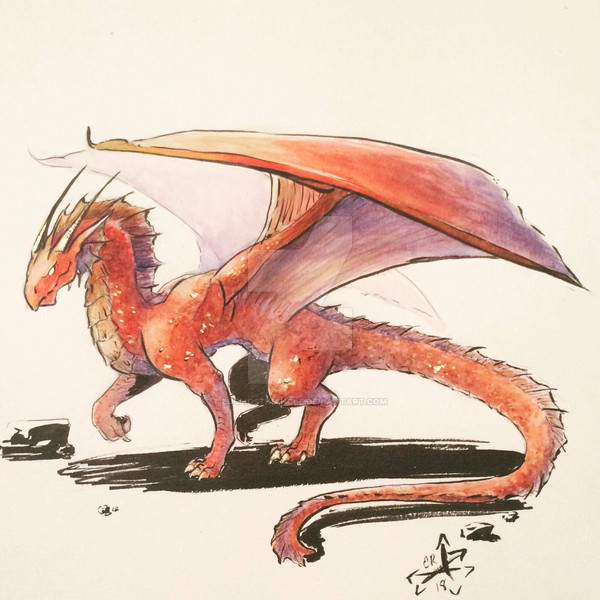HOME | DD
 euclidstriangle — True Dragon
euclidstriangle — True Dragon

#draco #dragon #dragons #inkbrush #watercolor #watercolorpainting #euclidstriangle #truedragon #dracodraconis #reddragon #dadragontutorial
Published: 2018-07-30 21:08:32 +0000 UTC; Views: 562; Favourites: 24; Downloads: 0
Redirect to original
Description
Working on some watercolor dragons that I’ll turn into informational prints for MCFC in Memphis.





 I am still working on a thorough taxonomy for dragons. You can laugh at me, you can decry how dragons are “fantasy creatures and therefore it doesn’t matter.” Tell an English major that there is no real benefit to dissecting every syllable in a piece of literature to understand the perfection in word choice, or debate with a gearhead whether an El Camino is more of a car or a truck. Nitpicky? Absolutely. Utterly unecessary? Try asking someone to draw you a dragon tattoo with no additional information and see what kind of variety you get.
I am still working on a thorough taxonomy for dragons. You can laugh at me, you can decry how dragons are “fantasy creatures and therefore it doesn’t matter.” Tell an English major that there is no real benefit to dissecting every syllable in a piece of literature to understand the perfection in word choice, or debate with a gearhead whether an El Camino is more of a car or a truck. Nitpicky? Absolutely. Utterly unecessary? Try asking someone to draw you a dragon tattoo with no additional information and see what kind of variety you get. 






Species: Draco draconis
Name: True dragon
Essential anatomic features: Vertebrate, chiropteric hexapod (four main limbs plus one pair of winged limbs), endothermic metabolic system, scaled with leathery skin (esp. patagium), highly structured but dense bones
Secondary features: fire/poison/etc. oral glands, horns, dorsal crest, digitigrade or plantigrade possible (thought more commonly the former), possible fine hairs
True dragons do not have feathers or fur. They are anatomically and physiologically distinct from dinosaurs. They are close to reptiles in many outward respects, but they cannot truly be reptilian as they would need to be endothermic in metabolism. Dragons are not as affected by their environment as many reptiles. While this could be due to their innate magical abilities, it would stand to reason that the creatures might have also evolved physiological features that would improve their survival without resorting to constant magic utilization. One theory on metabolic regulation suggests very fine, filament-like hairs between the scales to help regulate their body heat and detect movement. Such hairs might also help them detect magic in the surrounding area. Other theories point to an internal organ that moderates body metabolism solely, slowing to allow for complete hybernation.
























